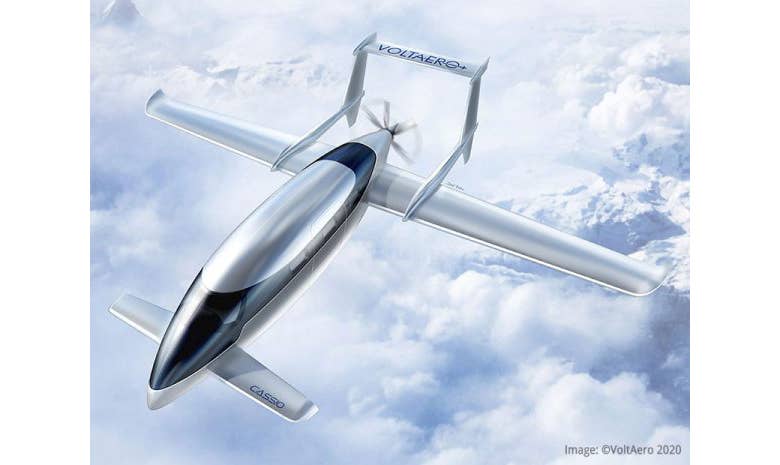VoltAero Reveals Production Design For Hybrid-Electric Cassio
France-based VoltAero unveiled the production configuration for its Cassio hybrid-electric aircraft family on Wednesday. The Cassio 330 will seat four and have a 330-kilowatt hybrid-electric propulsion system. The 480-kilowatt Cassio…

Image: VoltAero
France-based VoltAero unveiled the production configuration for its Cassio hybrid-electric aircraft family on Wednesday. The Cassio 330 will seat four and have a 330-kilowatt hybrid-electric propulsion system. The 480-kilowatt Cassio 480 will seat six and the 600-kilowatt Cassio 600 will seat ten. VoltAero is intending to certify the Cassio family under EASA CS23 certification specifications as a single-engine general aviation category aircraft.
“The Cassio production design’s unveiling represents the latest step in our realistic and highly pragmatic creation of an all-new aircraft family,” said VoltAero CEO Jean Botti. “It benefits from our team’s unmatched experience in hybrid-electric aviation, as well as the ongoing full-scale flight testing that removes the risk as we move toward the production phase.”
The Cassio aircraft family will be powered by two wing-mounted electric motors—each driving a forward-facing propeller—and a proprietary hybrid power module that combines a 300-kW (402-HP) internal combustion engine with three 60-kW (80-HP) electric motors. The engine will drive an aft-facing pusher propeller during cruise flight and charge onboard batteries. The Cassio is expected to have a range of approximately 800 miles and cruise speed of around 200 knots. As previously reported by AVweb, VoltAero began flight testing its Cassio 1 test bed aircraft, which is based on a Cessna 337 airframe, in March. The company is targeting the end of 2022 for the first deliveries of the 330 model.






